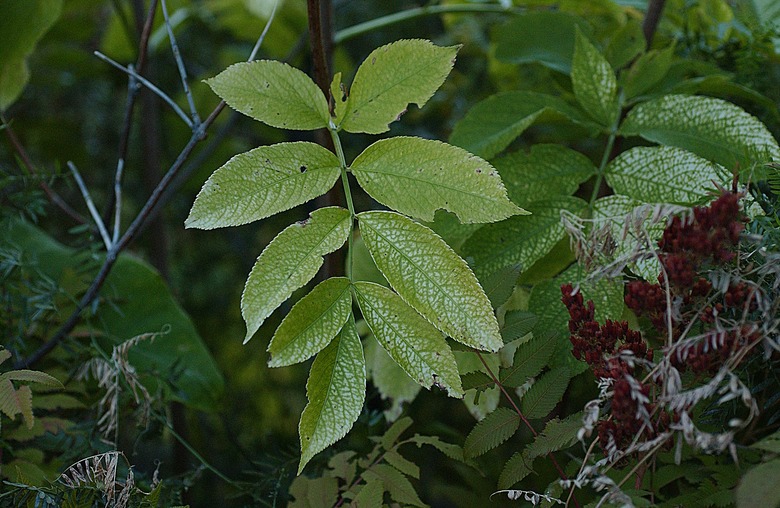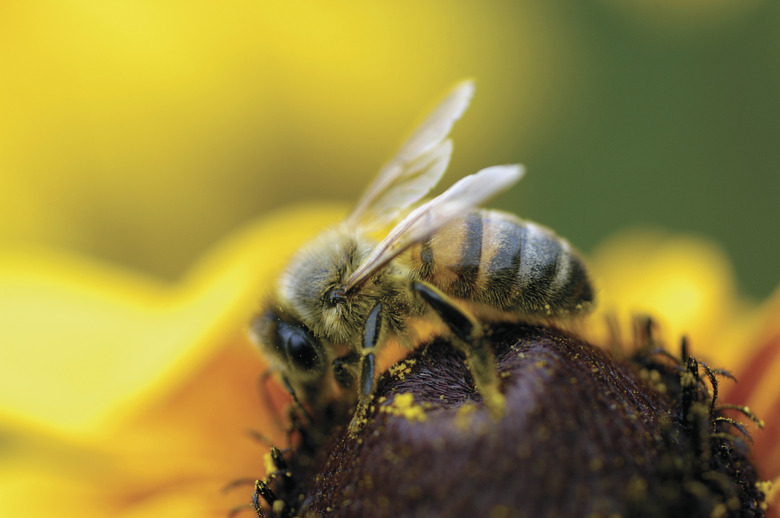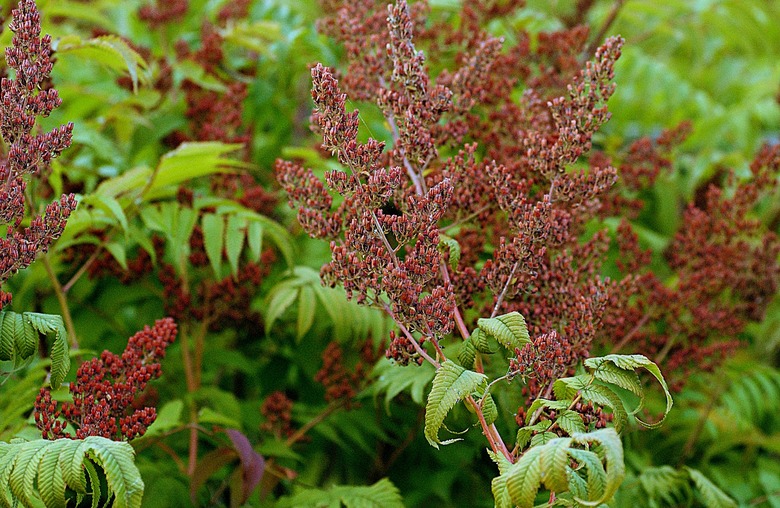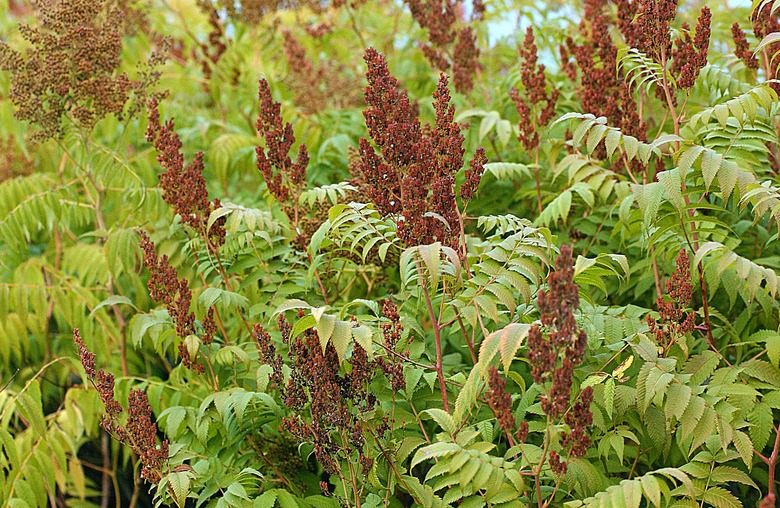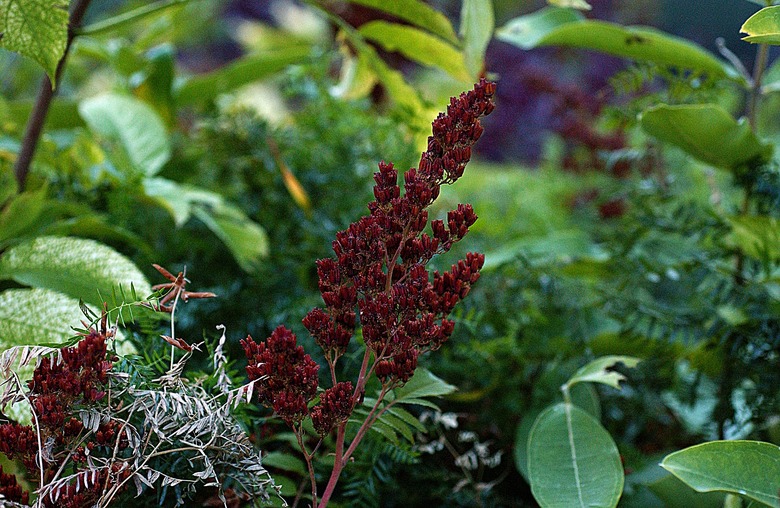Cons Of African Sumac Trees
According to the University of Arizona, African sumac trees are evergreen trees that came to the United States from South Africa. Gardeners in arid climates enjoy this tree for its drought tolerance and ornamental quality that its thin leaved canopy brings to the yard. Unfortunately, not every gardener is thrilled by the African sumac tree's presence in their landscape.
Bees
Late winter ushers in African sumac's blooming period. Trees begin to boast thousands of tiny green flowers, which attract surrounding bees. While bees are generally beneficial insects to yards, hundreds of bees attracted to one ornamental tree can not only become a problem but can be fatal if you have an allergy to bee stings. In addition, the tiny green flowers that they come to visit has very little visibility to gardeners and may not even be noticed for all the bee trouble.
- According to the University of Arizona, African sumac trees are evergreen trees that came to the United States from South Africa.
- In addition, the tiny green flowers that they come to visit has very little visibility to gardeners and may not even be noticed for all the bee trouble.
Leaves
African sumacs are not for those who want to keep a well manicured lawn. The tree drops its leaves when it is water stressed, has a fungal disease like root rot or from being over fertilized. In addition, African sumacs tend to lose leaves throughout the year without any reason. The tree will grow a larger canopy when given the best care. Healthy tree should result in a happy gardener, but numerous gardeners find themselves picking up after the tree.
Pruning
Suckers or water sprouts abundantly grow from African sumacs. Suckers are vertically growing branches that sprout from the root system of the plant. These branches must be removed from the tree, because they steal important nutrients meant for the main trunk of the plant. Also, suckers make the tree look extremely untidy and can cause them to look uneven. Gardeners must monitor their African sumac for sucker growth and keep their pruning saw ready.
- African sumacs are not for those who want to keep a well manicured lawn.
- These branches must be removed from the tree, because they steal important nutrients meant for the main trunk of the plant.
Poisonous
African sumacs are poisonous to humans. Every part of the tree contains urushiol oil, which causes an allergic reaction to skin. Gardeners should never handle the tree without gloves and keep children away from the plant. Refrain from burning any part of the tree. If you think a rash is bed, it is nothing compared to the harmful effects this tree can cause in the lungs. People have had to be hospitalized after making the mistake of burning foliage or wood. It is also not a good idea to use this tree in your compost.
- African sumacs are poisonous to humans.
- Gardeners should never handle the tree without gloves and keep children away from the plant.
